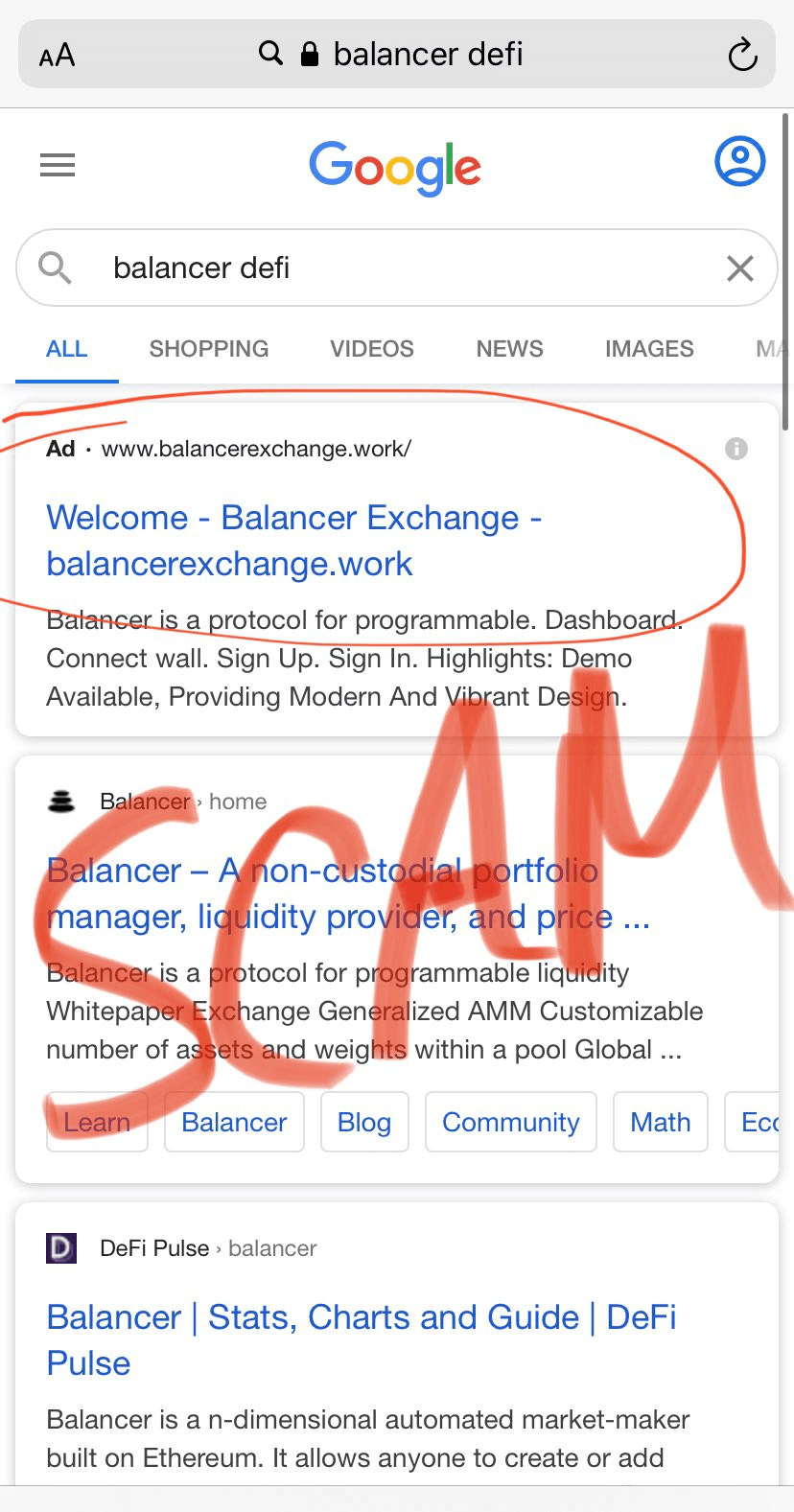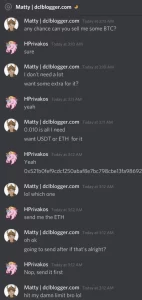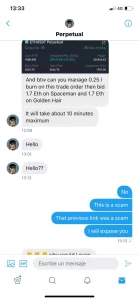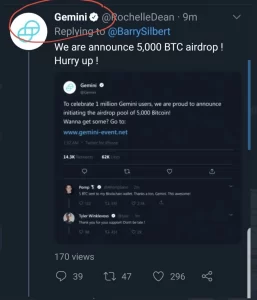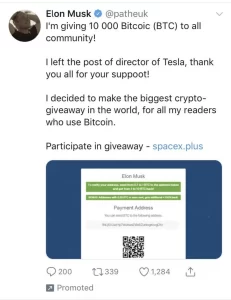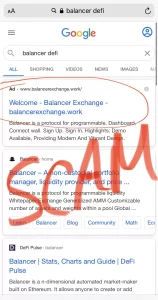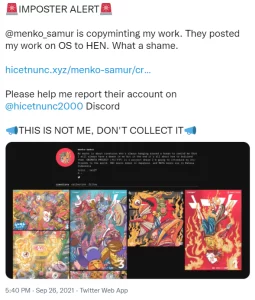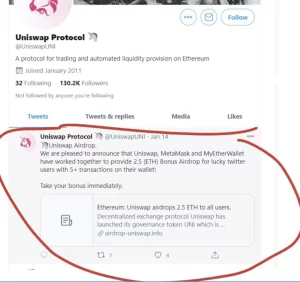Table of Contents
Today, we are going to let you know 15 of the most common scams in the NFT/Crypto world and how you can avoid them in the year 2022. In the NFT world, the price to pay for owning our wallets is having to be alert and pay close attention to possible scams. In this post, we gather the most common ones so you don’t fall for them.
Check out more:
The 4 best decentralized exchanges (DEX) of 2021
How to speed up or cancel pending transactions in Metamask Ethereum? (Year 2022 updated guide)
What is Template Wallet, and how to create an account on the Tezos blockchain?
1. The DM on Discord Scam
DM also known as Direct Message on Discord is one of the most common scams to see: someone who looks like he belongs in a project sends you a DM on Discord.
How the DM (Direct Message) on Discord scam works:
There is always a link to click on and it is most likely that if you do, there will be an exact copy of the project website and if you connect your wallet, you will lose everything. In this example, we see that the Opensea link ends in .fo instead of .io.
How to avoid DM (Direct Message) on Discord scam
To avoid this kind of scam, we can limit who sends us messages in the discord app,by clicking on Privacy and safety option under settings.
Afterwards, disable the option to allow Direct messages from server members. Of course, remember to activate it again for specific servers in which you are interested in (usually the smallest and most private).
2. The fake email/phishing scam
The crypto world, being a new ecosystem, is always full of pretense and scams. One of them is phishing. The email you see below is legitimate, and it is from a purchase from Lassofilms . However, many times you will receive emails the same as the one below from a domain such as opensea .tl or similar.
Many times you may receive an email saying that one of your most valuable token is been sold for a small amount, unleashing a panic in you and making you click on a link in order to purchase it. These types of emails play on urgency and panic.
How to avoid fake email/phishing scam in the NFT World
To avoid this, always try to only visit a link in your browser, and only log in from a legitimate/genuine link source you know from the marketplace.
Here we can see another example in which Lucas León was sent an email supposedly from Foundation. However, the domain ended in .art instead of .com
Profile clone (Friends on Discord) phishing Scam
Profile clone/phishing is also one of the most typical scams in the NFT world. Someone copies or clone the entire profile of a friend of yours with whom they know you have a relationship. They send you a message and take advantage of your trust to ask you for money or some type of private information.
In this example, we see how someone impersonated Matty (DCLblogger) to ask a friend of his to sell him BTC in exchange for ETH. We have also seen cases of foreign language-speaking friends who, for some “unknown reason,” speak to us in English and have no idea of our own language.
How to avoid Profile clone phishing scam in the NFT World
To avoid this, check very well the username of the person speaking to you on Discord and other social networks.
4. DM on Twitter scam (Direct Message)
This type of scam mostly affects artists who sell their art as NFTs.
How the DM (Direct Message) on Twitter scam works:
A collector sends you a DM on Twitter saying that he will buy your piece if you take some kind of action first (send him cryptocurrencies or click on a link). Obviously, no collector will ask you to send them money to pay for gas fees or something similar. Therefore, always distrust these types of messages.
In this image we can see how a “collector” sent a message to Fran Rodríguez following this scam model.
5. Fake accounts on Twitter
Sometimes accounts with the “verified” symbol are hacked on Twitter and renamed so that many people fall for a scam. One of the most typical that we have seen is to spoof the account of Elon Musk or crypto exchanges. Even Elon Musk himself was hacked back in the day by an internal Twitter bug.
How to identify, and avoid Fake accounts scam on Twitter
- Handle : the name after the @ is different than it should be.
- Airdrops that are “too” generous (no one is going to give you $ 1000 just for the sake of it, and even less by sending your money first).
- Incorrect spelling : in the image below we see how there are errors such as “suppoot” or “Bitcoic”.
- Low number of responses and interaction : although it is not totally indicative, if a tweet has a very low interaction compared to other tweets, it could be because it is a scam.
6. Google Ads domains clone scam
In Google Ads you can write the link you want. In fact, you can perfectly make ads from any website, scam or not.
How the Google Ads domains clone scam works:
Many scammers buy domains very similar to those of the main platforms such as Opensea and advertise them on Google Ads.
For example, the original is Opensea.io, but you can see Opensea .tl, .lo, etc. If you click, you will see a website exactly like the one you expect to find, but it is a scam.
A while ago, there was such a scam with Metamask that caused tons of people to download malicious software . This resulted in many hacked wallets.
7. Bogus NFTs: copyminting
One of the scams that most closely resembles those of the physical world is copyminting.
How the Bogus NFTs: copyminting scam works:
This involves generating a collection of NFTs that looks like the real ones but it is fake copies. They do this by writing a similar name in marketplaces such as Opensea and using the image of the original to minting.
This is something as said in an interview with Pequelord has happened to him several time. He recommended that, if you are an artist, buy a domain (Yourcollection .com) that goes directly to your collection in a marketplace so that people can buy from it.
How to avoid Bogus NFTs: copyminting scam in the NFT World
In order not to fall for this type of scam as a buyer, you can investigate using Etherscan and see which wallet is behind the minteo or access directly from the links of the profile of the artist in question.
8. Hacking account in crypto exchange platforms
Although this is something that is perhaps more of the crypto world in general, it can perfectly affect the people of the NFT world.
Sometimes, the account of users of certain exchanges has been hacked because it has been possible to access (through phishing or other methods) the email account and even the sms of the phone number. This is possible because there is a black market that allows the purchase of duplicate SIM cards.
For this reason, there are times that not even 2FA (2-factor authentication) can save us.
What we can do is have a coldwallet like Ledger or Trezor or, at a minimum, save our cryptocurrencies in our Metamask wallet.
9. Airdrops scam
How does Airdrops scam works in NFT:
On many occasions, airdrops are created from fake accounts that invite you to log into certain fake platforms with your Metamask wallet. Once we do, they will have access to our wallet and all its assets.
In this case, we can see how they made an account very similar to UniSwap with many followers. However, the real handle to Uniswap is @Uniswap and the link is Uniswap.org . Here we can see that none of these things are true in the image below.
10. Airdrops 2.0 and fake ERC-20 tokens
There is another much more dangerous version of airdrops, since it seems harmless and can make you lose everything.
Basically, there are ERC-20 tokens (“cryptocurrencies”) in Ethereum and other blockchains, which can empty your wallets and make you lose money.
How does Airdrops 2.0 and fake ERC-20 tokens scam works in NFT
For example, inside your wallet, you received a token with great value ($ 100,000), by going to decentralized exchanges such as Uniswap and signing the smart contract to be able to operate with these fake erc-20 tokens and sell them, you give permission to empty your wallet.
Be very careful with the tokens that you do not know!
11. Coldwallet hacked
Sometimes when you buy your coldwallet like Ledger or Trezor from an unofficial vendor (Amazon or eBay), you may actually be getting a hacked edition. This can be done in several ways and it is not always the fault of the seller.
For example, someone can buy a cold wallet on Amazon , hack it, and return it. The seller, seeing that it is only a return, sells it again to another customer .
It may also be the case that you see a great deal because the physical wallet has malicious software in it. Always buy your device from the official provider.
12. False mint scam
This is a scam that involves making an NFT appear as if it was minted from the wallet of someone famous like Beeple (at least for platforms like Opensea).
This is possible because you can create an NFT that is automatically sent to someone’s wallet and back without their permission. Opensea interprets that, being the first wallet it passed through, it was that person who mined it, leading to misunderstandings.
To avoid this, we can see in Etherscan the history of this NFT.
13. False or Fake collaboration Scam
Something that also happens a lot and that has been a reason why several artists have lost a lot of money are false collaborations.
How does False/Fake collaboration scam works in NFT
This consists of someone, from a company apparently with a following and a reputation, speaking to you because they would like you to make art for an NFT that they are going to launch. Although it may seem legitimate at first, they send you a “sample” file of what they want and it is actually a file that will make you lose everything. In this image of Xabier Iglesias , we see how they tried to deceive him.
How to avoid False/Fake collaboration scam in the NFT World
To avoid such scams, never, ever try to download sample files . For example, you can view them within a platform such as Google Drive or directly on YouTube. Usually, they come compressed on purpose so that you have to download them to your computer.
14. Gifted and dangerous NFTs
The last of the scams, although not much is known about it. The rumor has spread that there are NFTs that if you receive them to your wallet and interact with them, they can get your wallet hacked.
Although it is not known to what extent this can be the case, it is best to avoid finding out and not interacting with the NFT in Opensea. On occasion, you will see that the NFT in question has been listed for a fortune and you will be tempted to sell it. But, just like airdrop 2.0, this is one more tactic to mislead you.
Normally, they will be mined on the Polygon blockchain or similar , since it is much cheaper to send NFTs in bulk.
In the image, we see on the left a ” Classic Kitty “, an NFT that several people receive and that we do not know who is behind it.
15. False price on Opensea
One scam that happened for a while and still has its victims is to make an offer to someone on Opensea in a cryptocurrency of much less value , making the person believe that it is ETH. Although Opensea has taken measures so that this is not so easy, a while ago, the scammer in question put the ETH symbol in his profile image and thus managed to deceive the seller, who due to the rush and excitement of the sale, accepted the offer by seeing the number (ex: 15) next to the symbol.
In Conclusion
As we can see, many of these scams use social engineering so that you click on a link and log in with your wallet where you shouldn’t. To avoid falling into it, always try not to download files or click links and do not panic if you see a message about something that should not happen.
I am a crypto hobbyist, i offer Tips and Reviews on the best blockchain technology, crypto assets, emerging fintech trends, Country flags, banks virtual accounts, and the best Paying Legit Networks.
Check out my Latest Articles in the Following Categories here:
Cryptocurrency Payment System Countries Credit Card Reviews

